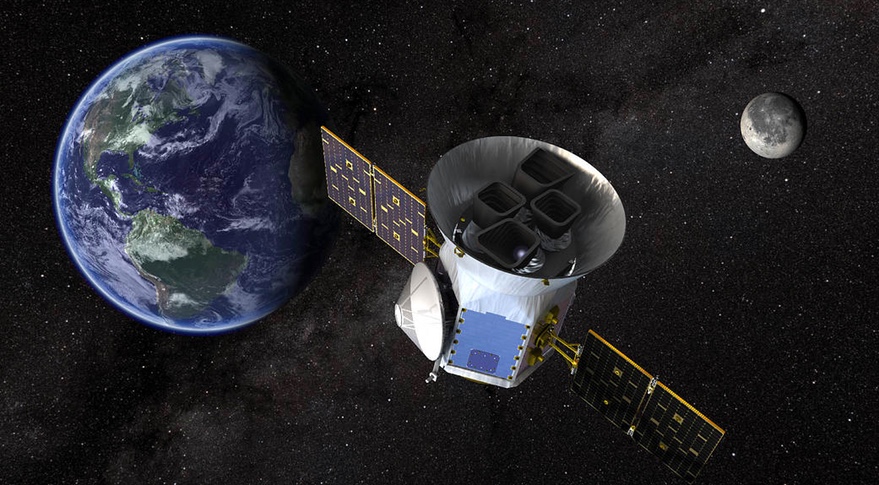WASHINGTON — The leaders of a NASA exoplanet mission are considering using a spare camera for a companion mission that would enable them to confirm existing discoveries and make new ones.
NASA’s Transiting Exoplanet Survey Satellite (TESS) launched in April 2018 to perform an all-sky survey. The spacecraft’s four cameras observe regions of the sky for weeks at a time, looking for minute dips in brightness of stars caused when exoplanets cross is front of, or transit, those stars.
TESS, which completed its two-year primary mission in 2020 and is now in an extended mission, has discovered thousands of potential exoplanets. In an Aug. 2 talk at the second TESS Science Conference, George Ricker, principal investigator for TESS at the Massachusetts Institute of Technology, said the mission had so far discovered 4,349 “objects of interest,” of which 3,667 were planet candidates. About 800 of those planet candidates are small exoplanets, with radii no more than four times that of the Earth.
The spacecraft remains in good condition. “The spacecraft and the instruments are all working really well,” said Roland Vanderspek, deputy principal investigator for TESS, in a separate presentation at the conference. “There’s really been no change in their performance since the beginning of the mission.”
The project is gearing up for a second extended mission that would start in October 2022 and last for three years. The health of the spacecraft along with its stable orbit, a highly elliptical two-week orbit around the Earth, give project officials confidence that TESS could operate into the next decade.
At the conference, Ricker discussed a proposal for a companion mission to TESS, currently known as TESS-L5. That would be a small spacecraft equipped with a camera that was built as a flight spare for the four on TESS. The spacecraft would operate from the Earth-sun L-5 Lagrange point, one astronomical unit, or about 150 million kilometers, from the Earth.
TESS-L5 would be able to perform observations of the same field of view of any of the cameras on TESS. “There is nothing that inspires more confidence in the validity of an observation than making that same observation at the same time from two different locations using near-identical detectors and getting the same result,” Ricker said in an email.
The long baseline between TESS, orbiting the Earth, and TESS-L5 could enable additional science, such as searching for solar system objects. “You will be able to utilize parallax measurements to determine where the objects observed actually are,” he said, estimating the joint observations could find 500 transneptunian objects in the outer solar system. TESS-L5 alone, from its vantage point, could also detect near Earth objects approaching the Earth from the direction of sun, which are difficult to otherwise observe.
The TESS-L5 mission would use laser communications to transmit data back to Earth. That system would provide six megabits per second of bandwidth and would use one-meter telescopes on Earth to receive the signals. Those downlinks would take place in daylight, meaning that the telescopes could be for astronomical observations at night as well.
Ricker said TESS-L5 remains is still a concept at a fairly early stage, although the project has studied the feasibility of the laser communications system and is looking into “significant private contribution to parts of the system,” such as the ground stations. It’s unclear how much the mission would cost, although as a smallsat using spare flight hardware its costs could be kept down.
A decision about whether to pursue TESS-L5 will depend on the state of TESS itself. If TESS continues to function well and have its mission extended, “we could possibly launch TESS-L5 during the 2026-2029 timeframe,” he said.
